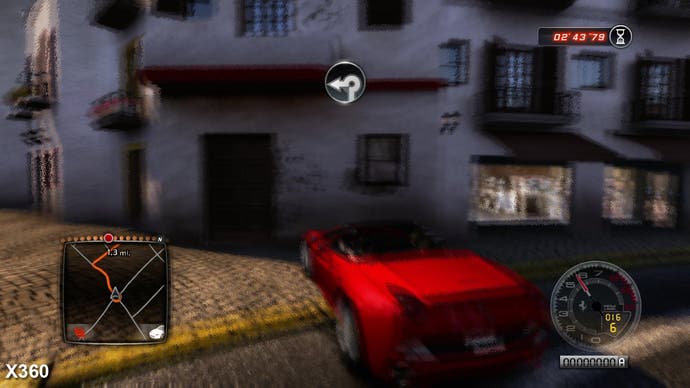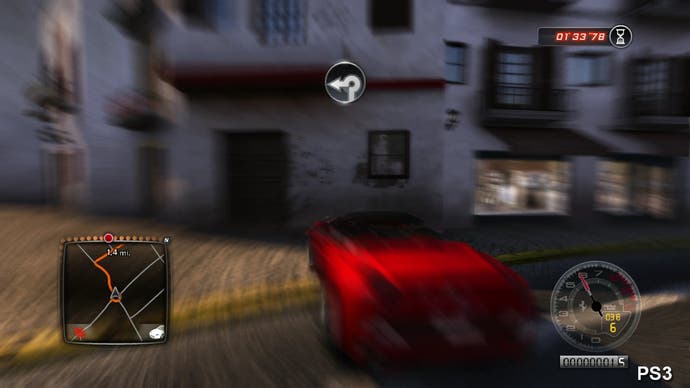Xbox 360 vs. PlayStation 3: Round 29
Marvel vs. Capcom 3, Test Drive Unlimited 2, Fight Night Champion, Stacking, de Blob 2.
Test Drive Unlimited 2
| Xbox 360 | PlayStation 3 | |
|---|---|---|
| Disc Size | 6.6GB | 5.94GB |
| Install | 6.6GB | 2272MB (mandatory) |
| Surround Support | Dolby Digital | Dolby Digital, 5.1LPCM, 7.1LPCM |
The release of Test Drive Unlimited 2 has been fraught with issues: technical glitches included an inability to sign in on both Xbox Live and PSN, whilst other users reported various game crashes and other bugs. In the production of this piece, we put up with two full system crashes on the PS3, and corruption of hard drive data on the 360, thus losing an entire game save, making production of this piece even more challenging.
However, while far from perfect, TDU2 still delivers an ambitious open-world experience. From the heavy but twitchy handling mechanics to the sun-drenched streets and valleys of Ibiza, this is unmistakably a Test Drive game. Perhaps the experience lacks polish - there are far too many glitches at times, plus you can't help feel that there should be more to do in such a wide expanse of space - but regardless there's still plenty of fun to be had.
Eden Games has done an admirable job getting the game up and running with a similar spec on both Xbox 360 and PlayStation 3, as this head-to-head video and the accompany comparison gallery demonstrate.
Test Drive Unlimited 2 renders at native 720p on both formats, with the usual 2x MSAA anti-aliasing solution on the 360. Meanwhile, PS3 owners get what looks like a custom edge-smoothing solution that looks a touch smoother, albeit with some added blur that affects the whole screen, similar to the RSX's hardware quincunx anti-aliasing. The end result is that both versions feature a similar amount of jaggies, with a fair amount of edge shimmering in places, but the 360 game comes across as slightly cleaner.
Outside of the framebuffer and gamma settings, we can see that the actual art assets are basically a match across the two platforms, with only some very, very minor instances of details missing on the PS3. These seem more like minute graphical oddities than anything else, considering the handling of most objects also appears like for like across both formats. Texture detail also looks to be the same, factoring out the slight blur added by the custom AA system on PS3.
Differences seen in shots on both this page and our comparison gallery - such as the variances in shadowing and lighting - are down to the game having a rolling day/night cycle in which these elements are always changing throughout. For example, cloud coverage is always shifting, and shadows are cast in accordance with the sun's position. Environmental shadows too; from trees, lamp posts and the actual buildings themselves all react in this way.
The use of a fully dynamic lighting system also helps to add some much-needed atmosphere to the proceedings. It's fair to say that when driving through the fading sunlight and into the quiet, dead of night, you get the impressions of being more connected to the world you're supposed to be in - despite the fact that the said world feels rather empty and almost sterile for the most part.


Moving on, and TDU2 features a number of improvements and artistic/technical changes compared to the first game. The use of motion blur in particular is far less liberal. Unlike the majority of modern racing games, Eden Games' latest uses it only to simulate the effect of the environment blurring in your vision, when driving flat out at high speeds.
The PS3 clearly benefits in this area: the blur effect is noticeably stronger, covering more of the screen, whereas on the 360 it has been dialled back somewhat. As we've seen before with the likes of Star Wars: The Force Unleashed II, it's not uncommon for developers to leverage the additional capabilities of the PS3's CPU for such effects. Moving blur off of the GPU and onto Cell not only frees up additional GPU resources for other tasks, but allows for certain tasks to excel on Sony's system; such as calculating higher-precision motion blur or depth of field.
Along with motion blur, we also see the addition of a neat screen-distortion effect, which plays a large part in both high-impact scenes and mild collisions. Crashes especially benefit from its inclusion; the entire screen blurs and parts of it become enveloped in a grainy ghosting of sorts. Again, the PS3 benefits from a stronger implementation in combination with motion blur.
Eden has chosen two different approaches for performance: the Xbox 360 version of the game adopts the usual capped 30FPS, dropping v-sync when rendering doesn't meet budget. Screen-tear ensues, but at least the player is getting the updated frame as quickly as possible, adding to the responsiveness from the controls.
The PS3's implementation is rather curious, with the developer opting for both v-sync and an uncapped frame-rate. Across the run of play, average frame-rate settles down to the same ballpark figure as the 360 version but this isn't really an accurate representation of moment-to-moment gameplay: the screen updates as soon as a new frame is ready, and the result is a slight judder that isn't so easy on the eye.
The use of v-sync on PS3 also has implications at the wrong end of performance spectrum too - in really busy areas, frame-rate drops significantly and muddies response as a consequence. In similar situations, 360 can tear badly, but it feels like the lesser of two evils. The deciding factor arguably comes down to image quality and the most stable performance, where we find that the 360 game - with its more consistent 30FPS update and cleaner look - is perhaps the better of the two, while the PS3 version is the one to get if screen-tear really annoys you.
In conclusion, beyond the graphical make up of the game on both platforms, the whole experience could have been more polished overall. Regardless of how the game looks, there are a variety of issues with how the game plays. The handling, for example, is decidedly unwieldy, while the vast expanse of Ibiza can become quite tiresome when there is a singular lack of available things to do. For a title so focused on projecting a certain lifestyle, it lacks a little life itself.
- Comparison Gallery
